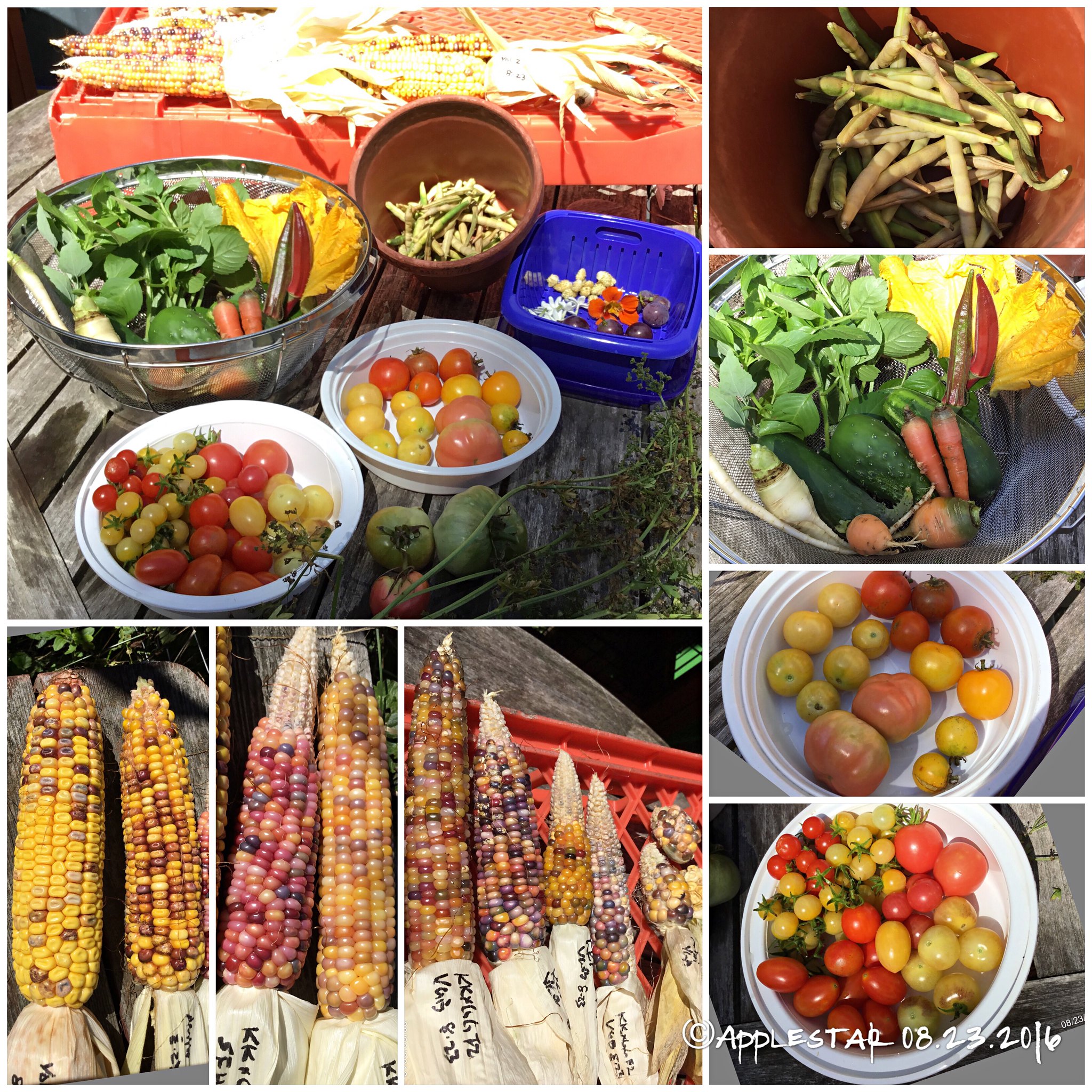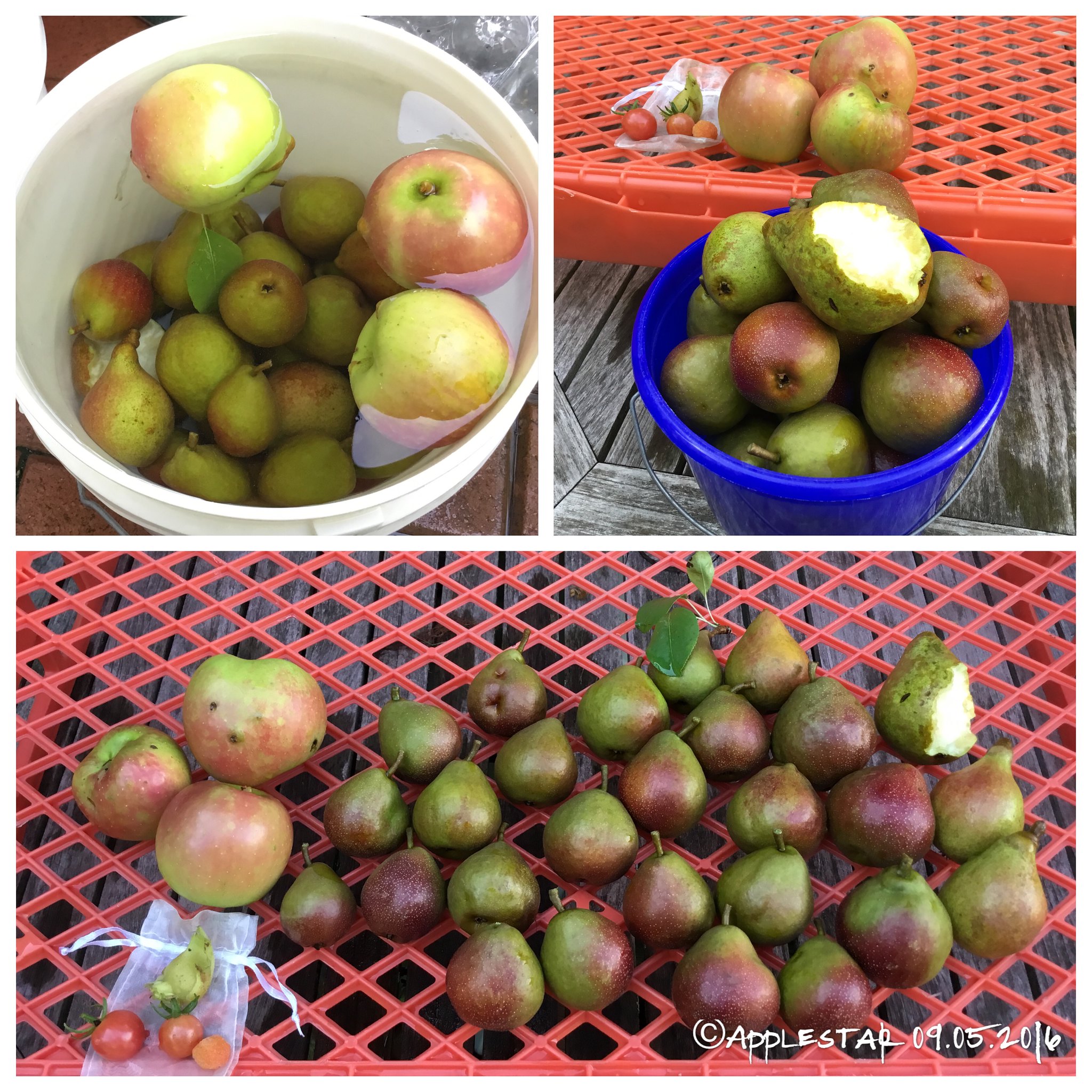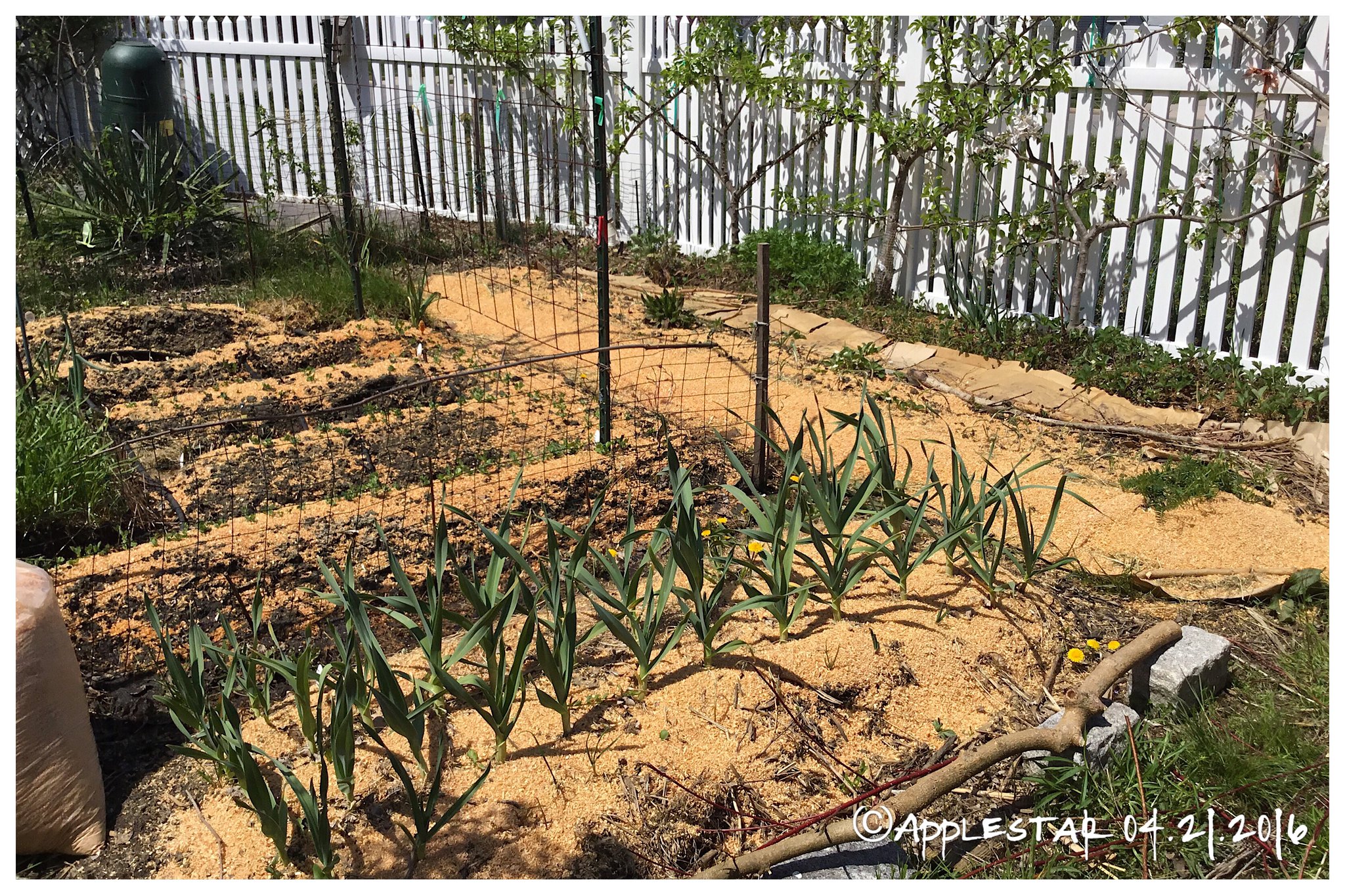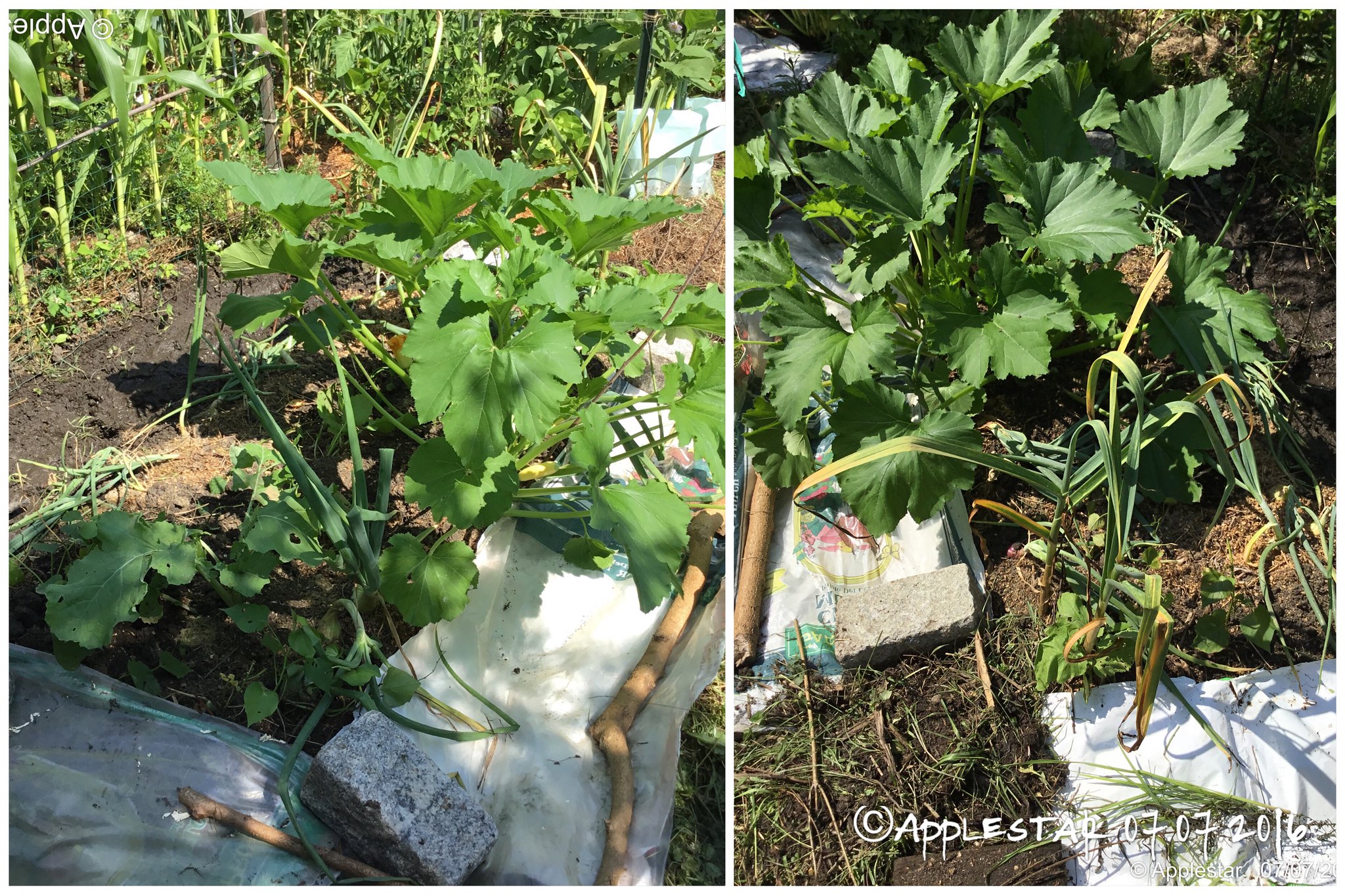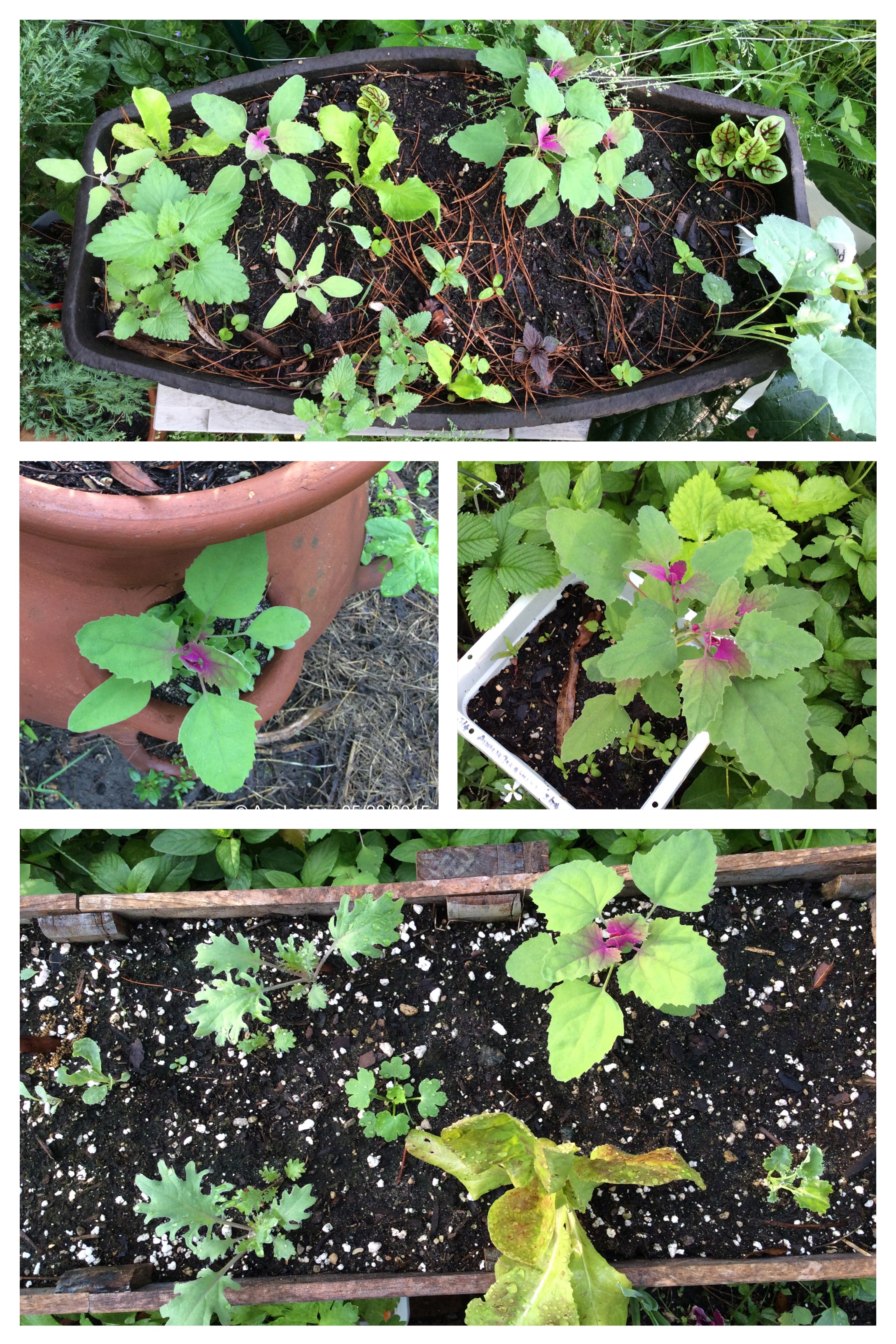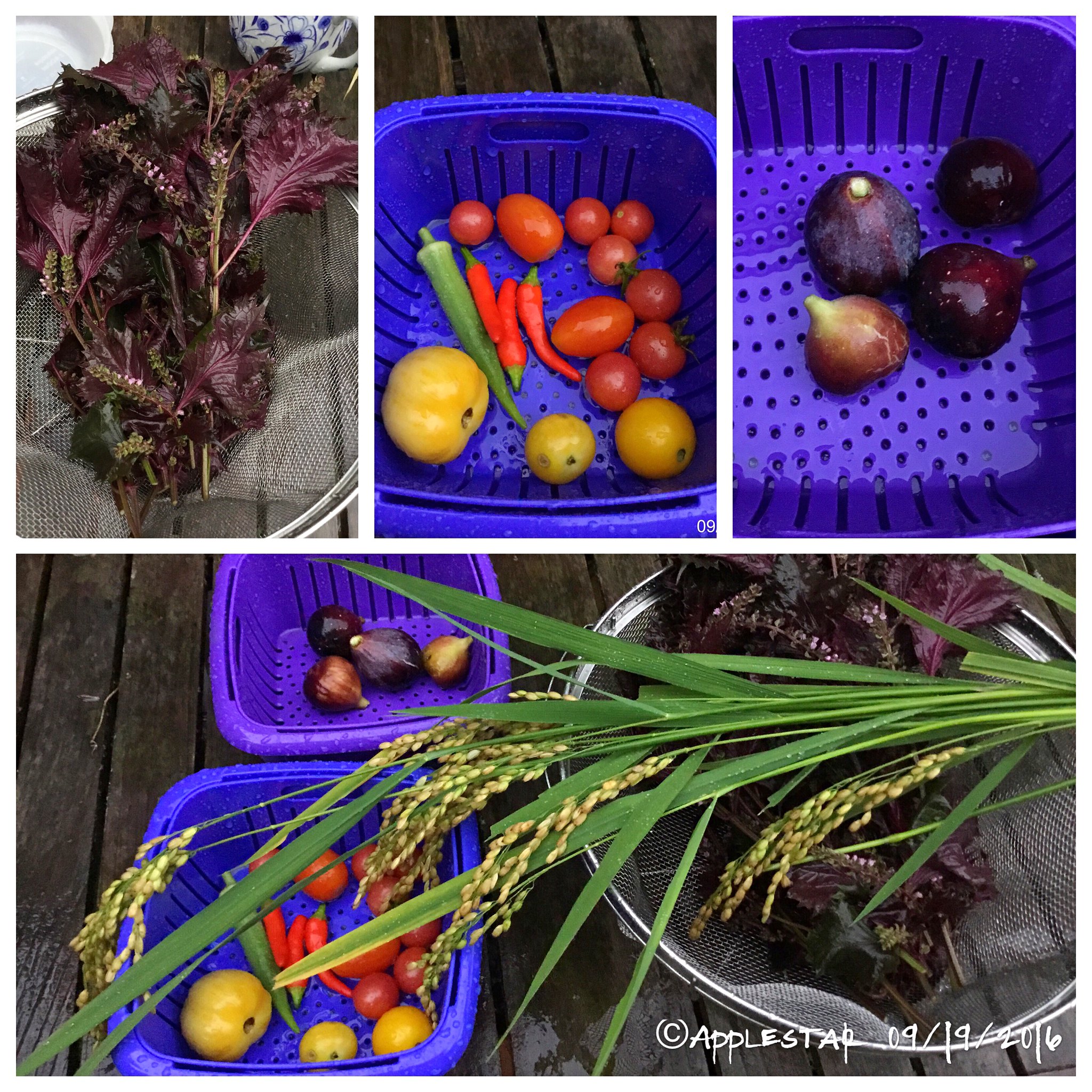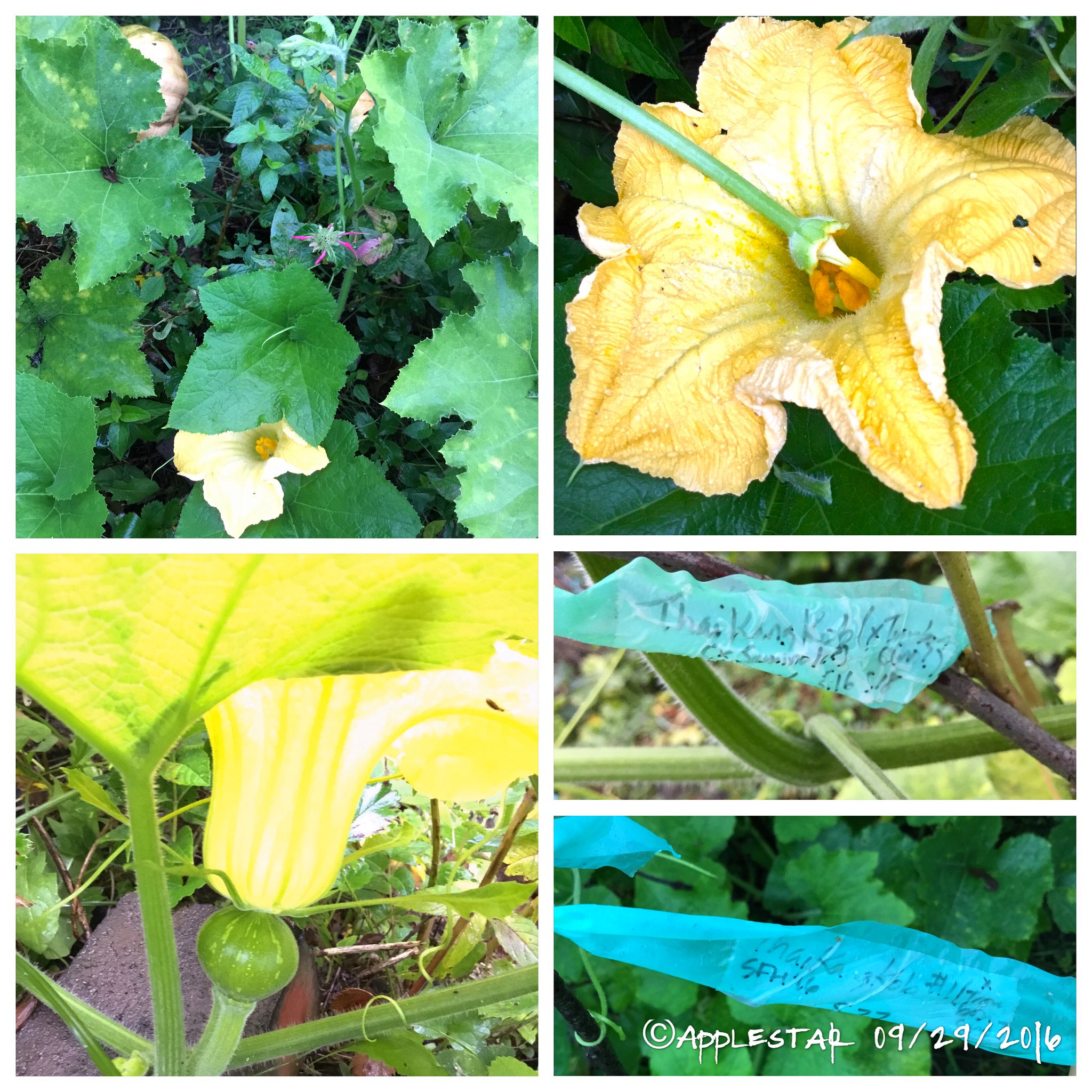This fruit has the looks of Kikuza, but is bigger than last years though I failed to measure or weigh it.

Today, I noticed whiteness in the cut and fearing mold, decided to cook it. When I cut it open, I was further disappointed by the solid core with no seed cavity and the greenish cast to the flesh. When I pulled out a few seeds and chewd on them, the hull was soft and edible, though filled.
Totally convinced that I had picked this immature, I proceeded to cut it up -- edible rind, solid flesh and seeds and all -- and cook it in a pot of Ao shiso (green perilla) decoction and honey. It wasn't until I had only a few pieces left that I decided to save a few seeds just in case they are viable.
...yep, they passed the float test.
--- I"m wondering if the interior appearance and soft seed hull is coming from the Tromboncino which I find better eaten as summer squash than winter squash. If C.moschata can cross with C.pepo, last year's Kikuza was skirting a large 6-8 plant patch of Kakai Hulless Seed squash with no shortage of blossoms, so it might have been bee-pollinated as well as my hand application of Tromboncino pollen. It will be interesting to see what these F2 seeds will produce next year. I believe if this IS a Kakai cross, then these seeds will be sterile.






